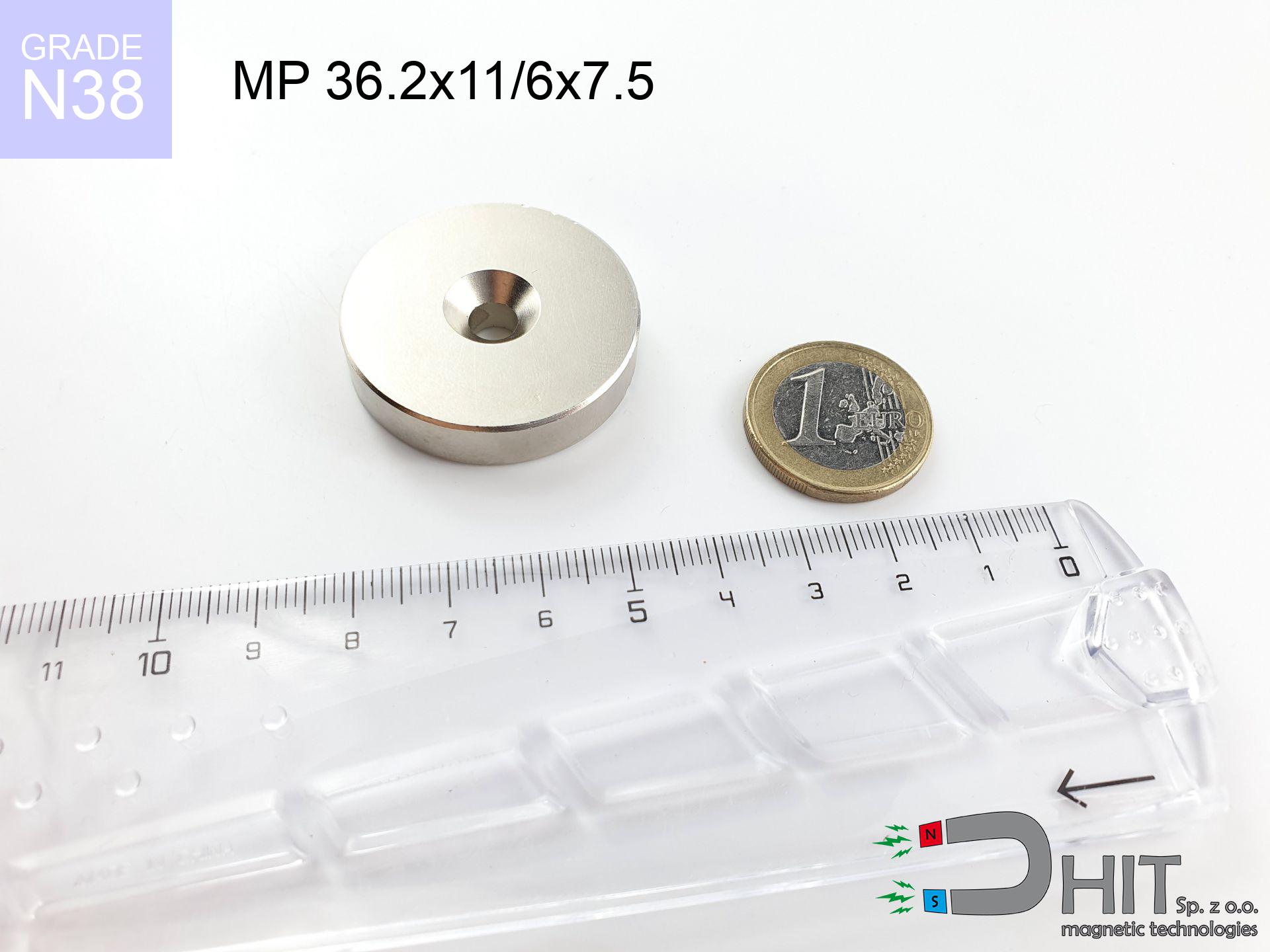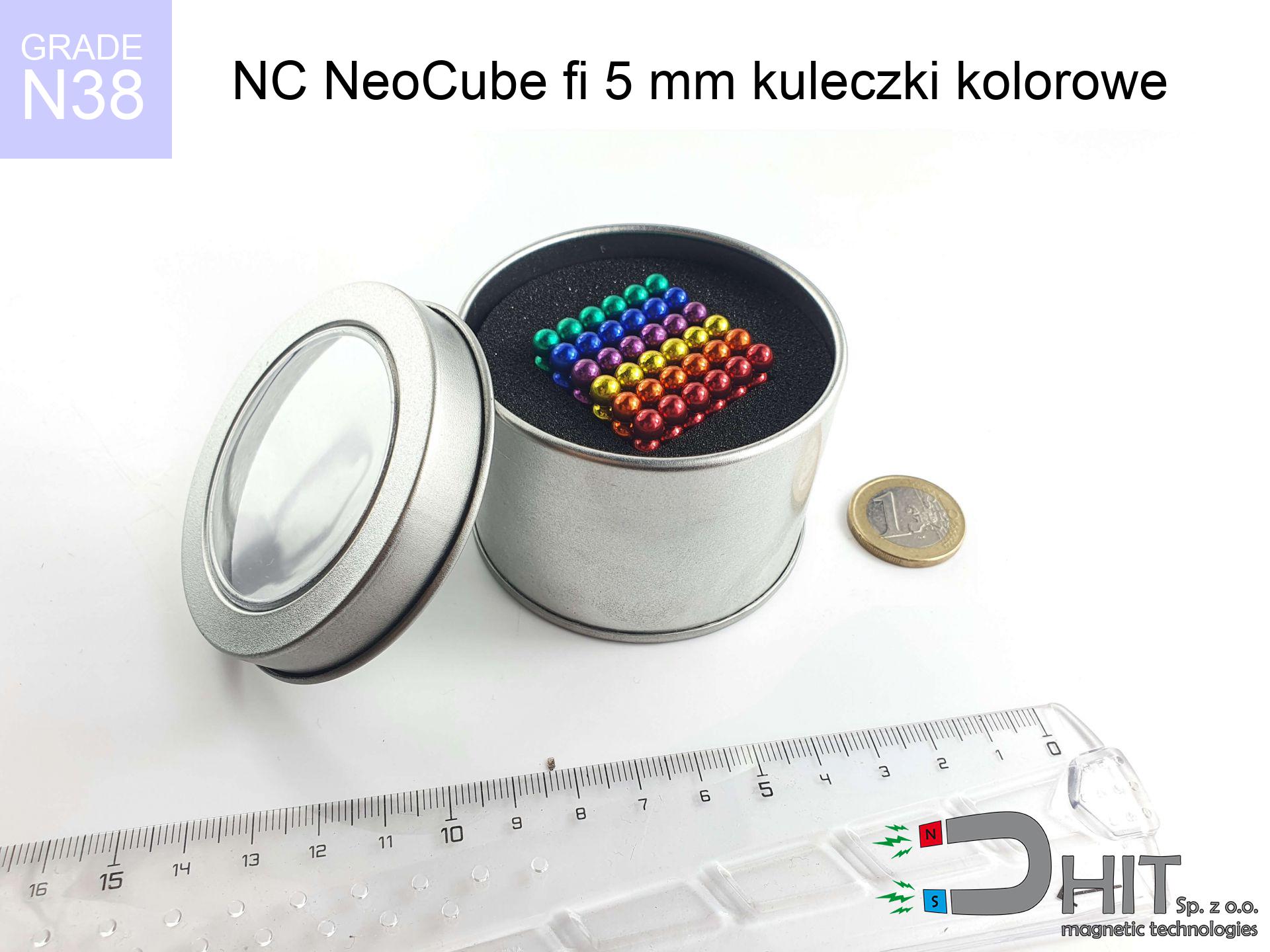UMGZ 32x18x8 [M6] GZ / N38 - magnetic holder external thread
magnetic holder external thread
Catalog no 190324
GTIN/EAN: 5906301813835
Diameter Ø
32 mm [±1 mm]
Height
18 mm [±1 mm]
Height
8 mm [±1 mm]
Weight
40 g
Load capacity
34.00 kg / 333.43 N
17.98 ZŁ with VAT / pcs + price for transport
14.62 ZŁ net + 23% VAT / pcs
bulk discounts:
Need more?
Pick up the phone and ask
+48 888 99 98 98
if you prefer drop us a message through
contact form
our website.
Specifications as well as structure of magnetic components can be calculated with our
magnetic calculator.
Same-day processing for orders placed before 14:00.
Technical details - UMGZ 32x18x8 [M6] GZ / N38 - magnetic holder external thread
Specification / characteristics - UMGZ 32x18x8 [M6] GZ / N38 - magnetic holder external thread
| properties | values |
|---|---|
| Cat. no. | 190324 |
| GTIN/EAN | 5906301813835 |
| Production/Distribution | Dhit sp. z o.o. |
| Country of origin | Poland / China / Germany |
| Customs code | 85059029 |
| Diameter Ø | 32 mm [±1 mm] |
| Height | 18 mm [±1 mm] |
| Height | 8 mm [±1 mm] |
| Weight | 40 g |
| Load capacity ~ ? | 34.00 kg / 333.43 N |
| Manufacturing Tolerance | ±1 mm |
Magnetic properties of material N38
| properties | values | units |
|---|---|---|
| remenance Br [min. - max.] ? | 12.2-12.6 | kGs |
| remenance Br [min. - max.] ? | 1220-1260 | mT |
| coercivity bHc ? | 10.8-11.5 | kOe |
| coercivity bHc ? | 860-915 | kA/m |
| actual internal force iHc | ≥ 12 | kOe |
| actual internal force iHc | ≥ 955 | kA/m |
| energy density [min. - max.] ? | 36-38 | BH max MGOe |
| energy density [min. - max.] ? | 287-303 | BH max KJ/m |
| max. temperature ? | ≤ 80 | °C |
Physical properties of sintered neodymium magnets Nd2Fe14B at 20°C
| properties | values | units |
|---|---|---|
| Vickers hardness | ≥550 | Hv |
| Density | ≥7.4 | g/cm3 |
| Curie Temperature TC | 312 - 380 | °C |
| Curie Temperature TF | 593 - 716 | °F |
| Specific resistance | 150 | μΩ⋅cm |
| Bending strength | 250 | MPa |
| Compressive strength | 1000~1100 | MPa |
| Thermal expansion parallel (∥) to orientation (M) | (3-4) x 10-6 | °C-1 |
| Thermal expansion perpendicular (⊥) to orientation (M) | -(1-3) x 10-6 | °C-1 |
| Young's modulus | 1.7 x 104 | kg/mm² |
Material specification
| iron (Fe) | 64% – 68% |
| neodymium (Nd) | 29% – 32% |
| boron (B) | 1.1% – 1.2% |
| dysprosium (Dy) | 0.5% – 2.0% |
| coating (Ni-Cu-Ni) | < 0.05% |
Ecology and recycling (GPSR)
| recyclability (EoL) | 100% |
| recycled raw materials | ~10% (pre-cons) |
| carbon footprint | low / zredukowany |
| waste code (EWC) | 16 02 16 |
Other products
Strengths and weaknesses of neodymium magnets.
Advantages
- They virtually do not lose strength, because even after 10 years the decline in efficiency is only ~1% (based on calculations),
- They are extremely resistant to demagnetization induced by external magnetic fields,
- A magnet with a smooth gold surface has an effective appearance,
- The surface of neodymium magnets generates a powerful magnetic field – this is a distinguishing feature,
- Made from properly selected components, these magnets show impressive resistance to high heat, enabling them to function (depending on their form) at temperatures up to 230°C and above...
- Considering the potential of free molding and adaptation to custom solutions, magnetic components can be modeled in a variety of forms and dimensions, which amplifies use scope,
- Huge importance in high-tech industry – they serve a role in HDD drives, drive modules, medical devices, also technologically advanced constructions.
- Relatively small size with high pulling force – neodymium magnets offer high power in tiny dimensions, which allows their use in miniature devices
Cons
- To avoid cracks under impact, we recommend using special steel holders. Such a solution protects the magnet and simultaneously increases its durability.
- NdFeB magnets lose force when exposed to high temperatures. After reaching 80°C, many of them experience permanent weakening of strength (a factor is the shape and dimensions of the magnet). We offer magnets specially adapted to work at temperatures up to 230°C marked [AH], which are very resistant to heat
- When exposed to humidity, magnets start to rust. To use them in conditions outside, it is recommended to use protective magnets, such as magnets in rubber or plastics, which secure oxidation as well as corrosion.
- Due to limitations in creating nuts and complex forms in magnets, we recommend using a housing - magnetic mount.
- Possible danger to health – tiny shards of magnets can be dangerous, if swallowed, which gains importance in the aspect of protecting the youngest. Furthermore, tiny parts of these products can be problematic in diagnostics medical after entering the body.
- With budget limitations the cost of neodymium magnets is a challenge,
Lifting parameters
Optimal lifting capacity of a neodymium magnet – what affects it?
- on a plate made of mild steel, effectively closing the magnetic flux
- with a thickness minimum 10 mm
- characterized by even structure
- without any insulating layer between the magnet and steel
- during pulling in a direction perpendicular to the plane
- in neutral thermal conditions
Lifting capacity in practice – influencing factors
- Clearance – the presence of any layer (rust, dirt, air) acts as an insulator, which reduces capacity steeply (even by 50% at 0.5 mm).
- Loading method – catalog parameter refers to pulling vertically. When slipping, the magnet holds significantly lower power (often approx. 20-30% of nominal force).
- Wall thickness – the thinner the sheet, the weaker the hold. Part of the magnetic field penetrates through instead of converting into lifting capacity.
- Steel grade – the best choice is pure iron steel. Cast iron may attract less.
- Surface structure – the more even the surface, the better the adhesion and higher the lifting capacity. Roughness creates an air distance.
- Thermal conditions – NdFeB sinters have a negative temperature coefficient. When it is hot they are weaker, and at low temperatures gain strength (up to a certain limit).
Lifting capacity was assessed with the use of a steel plate with a smooth surface of suitable thickness (min. 20 mm), under perpendicular pulling force, in contrast under shearing force the holding force is lower. Moreover, even a small distance between the magnet and the plate decreases the lifting capacity.
Safety rules for work with NdFeB magnets
GPS Danger
A strong magnetic field negatively affects the functioning of compasses in smartphones and navigation systems. Do not bring magnets near a smartphone to prevent damaging the sensors.
Magnets are brittle
Beware of splinters. Magnets can explode upon uncontrolled impact, launching sharp fragments into the air. Eye protection is mandatory.
Health Danger
For implant holders: Powerful magnets disrupt medical devices. Keep at least 30 cm distance or request help to work with the magnets.
Fire risk
Mechanical processing of neodymium magnets poses a fire risk. Neodymium dust reacts violently with oxygen and is hard to extinguish.
Demagnetization risk
Regular neodymium magnets (N-type) undergo demagnetization when the temperature exceeds 80°C. Damage is permanent.
Swallowing risk
Only for adults. Tiny parts can be swallowed, leading to severe trauma. Keep away from kids and pets.
Keep away from computers
Data protection: Neodymium magnets can ruin data carriers and sensitive devices (heart implants, hearing aids, timepieces).
Powerful field
Use magnets consciously. Their powerful strength can surprise even experienced users. Stay alert and respect their power.
Allergy Warning
Medical facts indicate that the nickel plating (the usual finish) is a common allergen. For allergy sufferers, refrain from direct skin contact and select encased magnets.
Crushing force
Big blocks can smash fingers instantly. Do not place your hand between two strong magnets.

![Magnet with screw UMGZ 32x18x8 [M6] GZ / N38 Magnet with screw UMGZ 32x18x8 [M6] GZ / N38](https://cdn3.dhit.pl/graphics/banners/magnet.webp)
![UMGZ 32x18x8 [M6] GZ / N38 - magnetic holder external thread](https://cdn3.dhit.pl/graphics/products/um-32x18x8-m6-gz-jix.jpg)
![UMGZ 32x18x8 [M6] GZ / N38 - magnetic holder external thread - ujęcie 2](https://cdn3.dhit.pl/graphics/products/umgw-32x18x8-m6-gz-seg.jpg)



![UMH 16x5x32 [M4] / N38 - magnetic holder with hook UMH 16x5x32 [M4] / N38 - magnetic holder with hook](https://cdn3.dhit.pl/graphics/products/umh-16x5x32-m4-lak.jpg)

